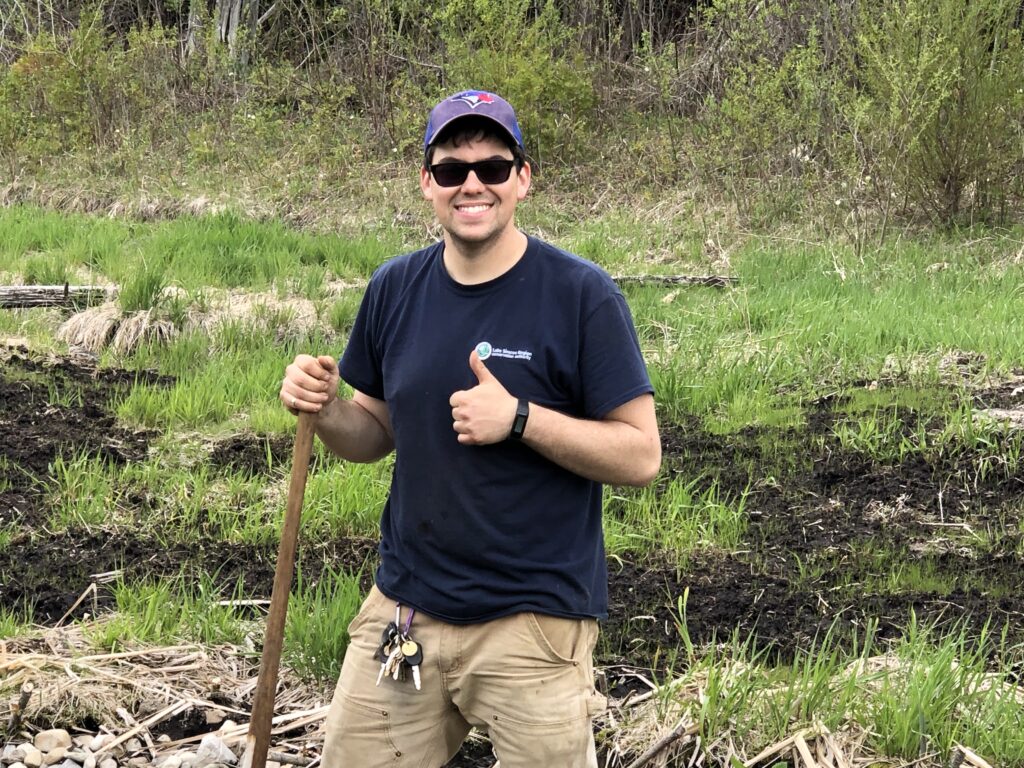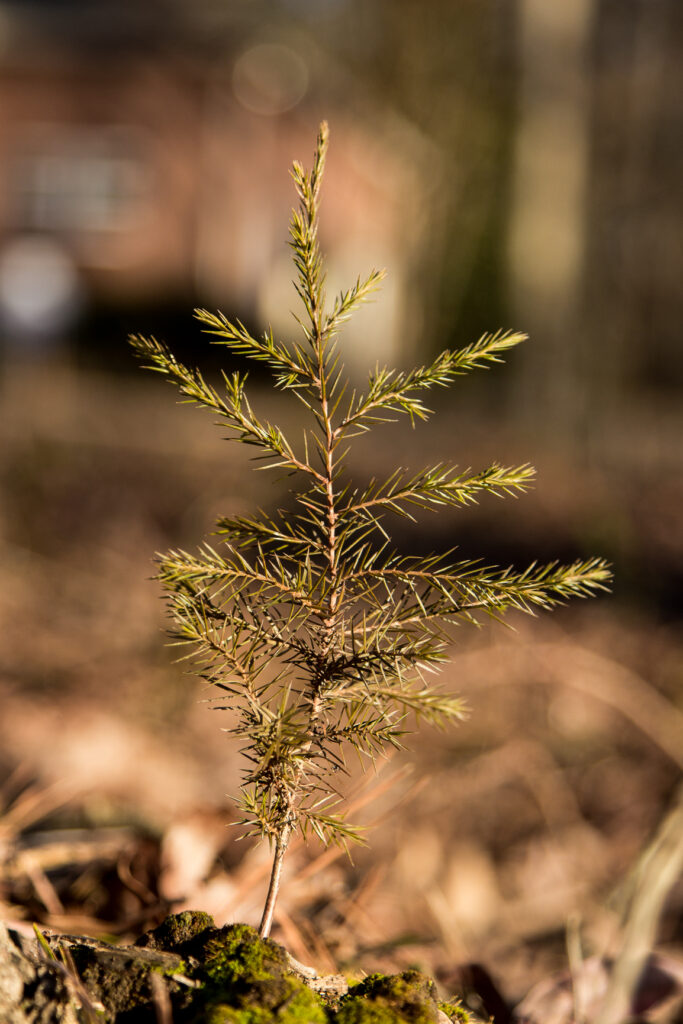
Grrrrrrrrr, the sound of the chainsaw and other cutting equipment pierces through the otherwise silent fall forest. The crack of the wood and the felling of another tree is a little talked about part of our work in forest management at LSRCA. After all, isn’t a conservation authority all about preserving trees, planting more and safeguarding their future?
In this article, we highlight LSRCA Forester, Cory Byron, offer a glimpse into the history of forestry in Canada, and share some reflections from Cory’s youth.
“I remember being about 8 or 9 when my brother and I roamed around the forest at our family cottage on the French River in Northern Ontario. We created paths throughout the property, each connecting to a unique natural feature and our family’s neighbouring property”

This is just one example of several childhood experiences that embedded a deep respect of the forest and contributed to defining Cory’s identity as an adult. Now a Registered Professional Forester, Cory’s a graduate of Lakehead University’s Forestry program, one of the few remaining forestry programs in Ontario.
What is Forestry?
Modern forestry can be generally defined as the management of forests, with consideration to wildlife habitat, natural water quality, biodiversity, ecological restoration, watershed management, erosion control, carbon sequestration, air quality, fuel, timber, recreation and more.
What is a Forester?
A forester is a person who practices the science of managing forests, undertaking a broad range of activities necessary to ensure their health, quality and sustainability so they can deliver the many ecological and economic services we rely on.
In the first half of the 20th century, a growing number of foresters began advocating for the careful management of forests in Canada, but were largely ignored. Most forests by that time were owned by the government*, leaving the fate of forests to the political will of the time. As a result, many forests in Canada were cut down with little to no regard for the future.
“I remember, at the cottage, when we were in the forest between our family properties, all we could hear were the birds and the soft rush of the river. It seemed like we were so far from everything, yet we were less than 150 metres from the cottage.”
Cory Byron
Post World War II, disposable income began to increase and so did the desire for forests as places of recreation and leisure. Leading up to the 1970s, the demand for foresters began to grow as the logging industry boomed. It created a need for foresters to oversee harvesting and procurement of wood, which ultimately led to the forestry profession becoming stigmatized as the rise of environmentalism took hold. Foresters were criticized for being more concerned with extraction than stewardship.
“I remember feeling like everything was placed there for a reason, that nature was a playground – with the huge boulder the size of a car and the massive white pine … for climbing, the secluded beach… perfect for launching our canoe and the 5 cedar trees … for a tree house. We would hang out for hours!”
Cory Byron
In and around the 1970s forest management started to become more defined, more focused on creating and sustaining resilient forests and began to branch (no pun intended) into new areas like forest research and care of urban forests (which became a legitimate sub-specialty), in part due to the devastating impacts of invasive species (such as Dutch Elm Disease) and the efforts needed to combat these tree killers.
Since the 1970s, forestry practices have improved dramatically. Today, foresters are environmental stewards who know the value of forests and are equipped to preserve them over the long term.

Cory Byron now works with a team at the Lake Simcoe Region Conservation Authority to support all facets of forest management in the Lake Simcoe watershed. The ultimate goal of the team is to manage our forests so they can reach a high quality state and can regenerate themselves. These forests often contain a mix of species of varied ages and can withstand threats like droughts, invasive species, and more. They provide us with the most critical ecological services – carbon sequestration, water filtration, flood protection, food and shelter for plants and animals – and ultimately, alleviate some of the impacts of climate change.
* LSRCA acknowledges that colonization of Indigenous Peoples was taking place before and during the period covered in this article, and that since creation, Indigenous Peoples have not faltered in their reverence and care for land and water.
Help us help you
LSRCA supports the efforts of farmers, shoreline residents and rural landowners to restore our watershed, visit www.LSRCA.on.ca/treeplanting for more information or email our restoration specialists at restoration@LSRCA.on.ca.
Contact Customer Service:
Phone: 905-895-1281
Toll Free: 1-800-465-0437
Email: info@LSRCA.on.ca
